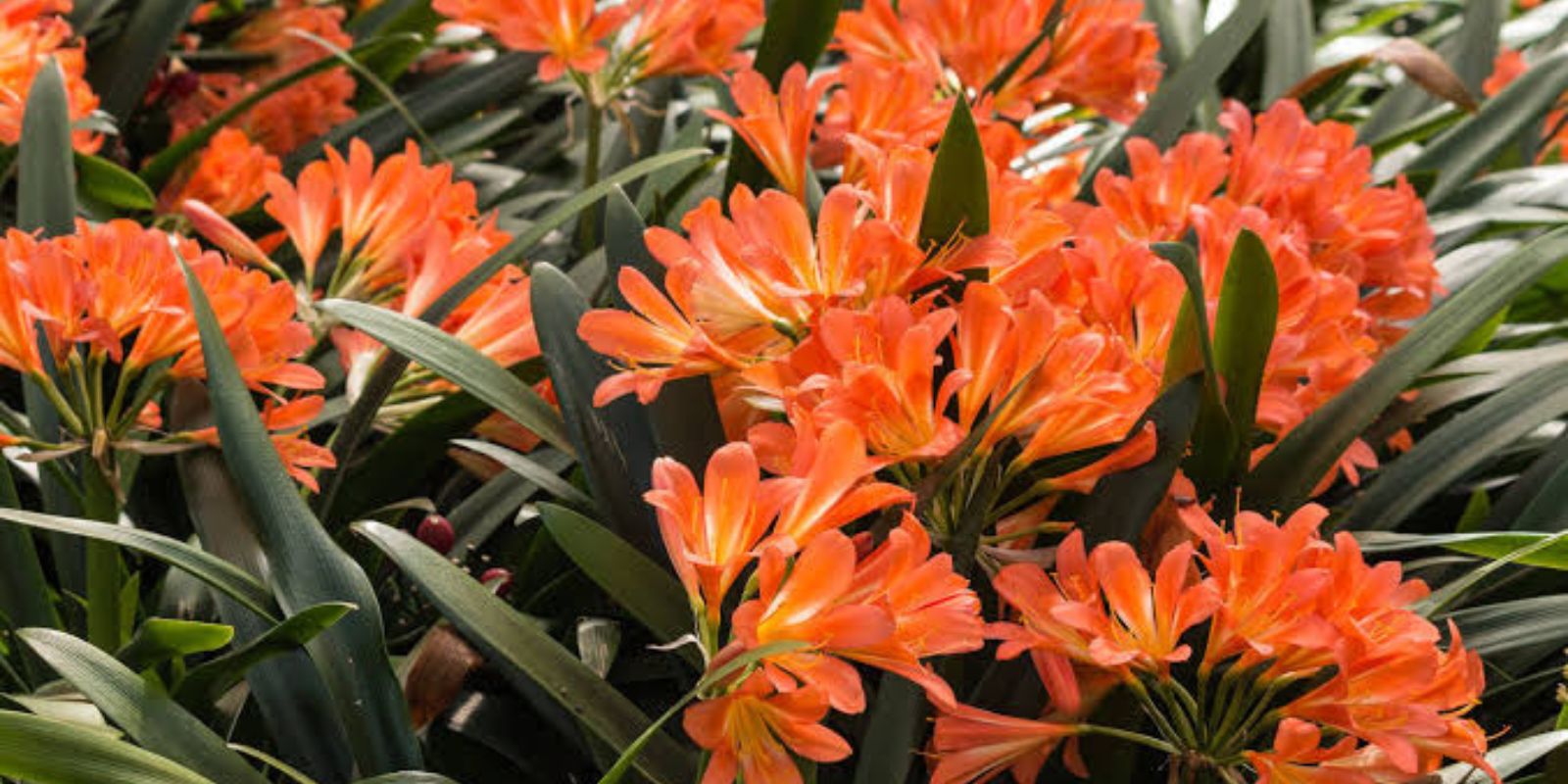Clivia is a versatile and stunning flowering plant that can thrive in both indoor and outdoor spaces. Known for its striking orange, yellow, or red blooms, Clivia is a favorite among gardening enthusiasts for its low-maintenance needs and year-round beauty. This guide provides all the essential tips to grow and care for your Clivia so it can flourish and bring a vibrant touch to your home or garden.
Understanding Clivia: A Brief Overview
Native to South Africa, Clivia is a member of the Amaryllidaceae family. Its broad, dark green leaves create a striking contrast to its vibrant flowers, making it an ornamental choice for homes, offices, and gardens. Clivia is a slow-growing plant that requires patience and care to achieve its maximum potential, but the rewards of its vibrant blooms make the effort worthwhile.
1. Growth Conditions: Setting the Right Environment
Clivia thrives in semi-shaded conditions, making it ideal for indoor spaces with indirect light or outdoor gardens with dappled shade.
- Light Requirements: Avoid direct sunlight, as it can scorch the leaves. Indoors, place Clivia near a north- or east-facing window for soft, filtered light. Outdoors, ensure it’s in a shaded area, such as under trees or on a covered patio.
- Temperature: In summer, Clivia can handle moderate warmth. However, in autumn and winter, protect it from frost by moving it indoors, maintaining a temperature range of 10–15°C (50–59°F).
2. Watering and Winter Dormancy
Clivia has unique watering needs that change with the seasons. Overwatering is one of the most common mistakes gardeners make with this plant.
- Spring to Summer: Water regularly to keep the soil moist but not soggy. Let the top layer dry out slightly before watering again.
- Autumn to Winter: From October to January, reduce watering significantly. This dormancy period helps the plant prepare for its next bloom cycle. Avoid overwatering during this time to prevent root rot.
3. Fertilization: Boosting Healthy Growth and Blooms
Fertilizing your Clivia correctly is key to achieving those iconic, vibrant flowers.
- Spring: After the plant’s rest period, start fertilizing using a balanced flowering plant fertilizer.
- During Flowering: Increase fertilization to once a week from spring to August to support robust blooms. Use a fertilizer high in phosphorus and potassium to promote flower development.
- Autumn and Winter: Stop fertilizing during dormancy to allow the plant to rest.
4. Flowering Tips: Getting the Most Out of Your Clivia
Clivia’s blooming period is one of its most striking features. Proper care during this time ensures a stunning display.
- Encourage Bud Formation: During dormancy, limit watering and keep the plant in a cool spot. Once buds appear, gradually increase watering.
- During Blooming: Fertilize weekly and maintain consistent watering to prevent leaves from wilting. Avoid moving the plant, as Clivia is sensitive to relocation and may drop its flowers.
5. Transplanting and Propagation
Clivia does not require frequent repotting. Only transplant it when necessary, typically every 3–5 years or after the blooming season.
- When to Transplant: Wait until the plant has finished flowering.
- How to Transplant: Use a well-draining potting mix rich in organic matter. After transplanting, water sparingly until the plant establishes itself.
- Propagation: Clivia can be propagated through offsets (baby plants) that grow at the base of the main plant. Carefully separate the offsets during repotting and plant them in their own pots.
6. Soil Requirements and Pot Selection
The right soil and pot are crucial for Clivia’s health.
- Soil: Use a mix of peat, loam, and sand for optimal drainage. The soil should have a slightly acidic pH (5.5–6.0).
- Pots: Choose a pot with drainage holes to prevent waterlogging. For mature plants, select a heavy pot to stabilize the plant’s large leaves and flowers.
7. Common Challenges and Solutions
Like all plants, Clivia can face challenges, but these are easy to overcome with proper care.
- Root Rot: Avoid overwatering and ensure the pot has proper drainage.
- Yellowing Leaves: Check for overwatering, underwatering, or nutrient deficiencies. Adjust care accordingly.
- Pest Issues: Inspect the plant regularly for pests like mealybugs or scale. Use neem oil or insecticidal soap to treat infestations.
- Lack of Flowers: If your Clivia isn’t blooming, it may need a longer dormancy period or more balanced fertilization.
8. The Joy of Growing Clivia
Clivia is a plant that rewards patience and care with breathtaking flowers. Its ability to adapt to indoor and outdoor conditions makes it a versatile choice for gardeners of all skill levels. With its bold blooms and glossy green leaves, it’s a true showstopper in any setting.
Quick Care Checklist
- Light: Indirect sunlight or partial shade.
- Watering: Regular in spring and summer, minimal in autumn and winter.
- Fertilization: Every two weeks during spring and weekly during blooming season.
- Temperature: 10–15°C during dormancy; avoid frost.
- Repotting: Every 3–5 years after flowering.
Conclusion
Clivia is more than just a plant—it’s a statement of elegance and resilience. With its vibrant flowers and easy care requirements, it’s a must-have for anyone looking to add beauty to their home or garden. Whether you’re a seasoned gardener or a beginner, growing Clivia will bring you both joy and satisfaction.
Have you grown Clivia before? Share your experiences or tips in the comments below!

